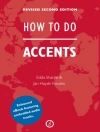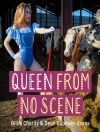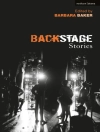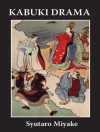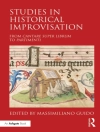The demise of the New German Cinema and the return of popular cinema since the 1990s have led to a renewed interest in the postwar years and the complicated relationship between East and West German cinema in particular. A survey of the 1950s, as offered here for the first time, is therefore long overdue. Moving beyond the contempt for ‘Papa’s Kino’ and the nostalgia for the fifties found in much of the existing literature, this anthology explores new uncharted territories, traces hidden connections, discovers unknown treasures, and challenges conventional interpretations. Informed by cultural studies, gender studies, and the study of popular cinema, this anthology offers a more complete account by focusing on popular genres, famous stars, and dominant practices, by taking into account the complicated relationships between East vs. West German, German vs. European, and European vs. American cinemas; and by paying close attention to the economic and political conditions of film production and reception during this little-known period of German film history.
Mục lục
List of Illustrations
Introduction
Chapter 1. The Question of German Guilt and the “German Student”: Politicizing the Postwar University in Kortner’s Der Ruf and von Wangenheim’s Und wieder
Jaimey Fisher
Chapter 2. Returning Home: The Orientalist Spectacle of Fritz Lang’s Der Tiger von Eschnapur and Das indische Grabmal
Barbara Mennel
Chapter 3. The Passenger: Ambivalences of National Identity and Masculinity in the Star Persona of Peter van Eyck
Tim Bergfelder
Chapter 4. Helmut Käutner’s Epilog: Das Geheimnis der Orplid and the West German Detective Film of the 1950s
Yogini Joglekar
Chapter 5. Location Heimat: Tracking Refugee Images, from DEFA to the Heimatfilm
Johannes von Moltke
Chapter 6. ‘Great Truths and Minor Truths’: Kurt Maetzig’s Ernst Thälmann Films, the Antifascism Myth, and the Politics of Biography in the German Democratic Republic
Russel Lemmons
Chapter 7. The First DEFA Fairy Tales: Cold War Fantasies of the 1950s
Marc Silberman
Chapter 8. Visualizing the Enemy: Representations of the “Other Germany” in Documentaries Produced by the FRG and GDR in the 1950s
Matthias Steinle
Chapter 9. The Treatment of the Past: Geza Radvanyi’s Der Arzt von Stalingrad and the West German War Film
Jennifer M. Kapczynski
Chapter 10. Film und Frau and the Female Spectator of 1950s West German Cinema
Hester Baer
Chapter 11. Reterritorializing Enjoyment in the Adenauer Era: Robert A. Stemmle’s Toxi
Angelica Fenner
Chapter 12. Allegories of Management: Norbert Schultze’s Sound Track for Das Mädchen
Rosemarie Larson Powell
Chapter 13. The Restructuring of the West German Film Industry in the 1950s
Knut Hickethier
Chapter 14. The Other ‘German’ Cinema
Mary Wauchope
Works Cited
Filmography
Notes on Contributors
Index
Giới thiệu về tác giả
Sabine Hake is the Texas Chair of German Literature and Culture in the Department of Germanic Studies at the University of Texas at Austin. She is the author of four books: German National Cinema (2002), Popular Cinema of the Third Reich (2001), The Cinema’s Third Machine: German Writings on Film 1907-1933 (1993), Passions and Deceptions: The Early Films of Ernst Lubitsch (1992), as well as numerous articles on German film and Weimar culture. Her current book project deals with urban architecture and mass utopia in Weimar Berlin.



